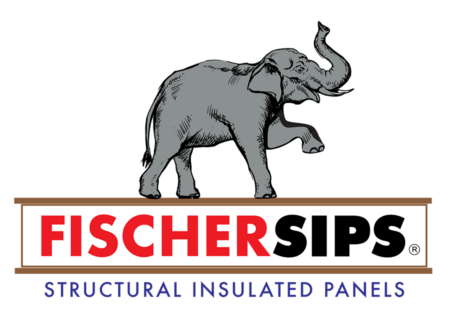Sustainability
How green are SIPs homes? Are SIPs a smart choice for sustainability?
How Green are SIPs homes?
Learn about the sustainability of building with SIPs.
Homes built with structural insulated panels are more energy-efficient, built with less waste, and last longer than homes built with conventional framing techniques. The buildings and construction sector is by far the largest emitter of greenhouse gases, accounting for a staggering 37% of global emissions. Additionally, 11% of carbon emissions come from embodied carbon or the carbon released during the manufacturing, transportation, construction, and end-of-life phases of all built assets. By building stronger, more durable, energy-efficient homes with less waste, SIPs can contribute to developing a greener alternative.
Sustainable features of SIP homes
Energy Efficiency
According to ORNL blower door tests, a SIP room is 15 times more airtight than its stick-framed counterpart with fiberglass insulation. The result is homes that use 40 – 60 percent less energy than a house built with conventional framing.
Reduced Construction Waste
Our SIPs panels are pre-measured and cut, minimizing on-site waste. This streamlined process not only speeds up construction but also reduces the environmental impact associated with material disposal.
Eco-Friendly Materials
There are two major materials used in structural insulated panels. OSB and and EPS foam. OSB is manufactured from fast-growing and underutilized wood species. It also uses small chips, making OSB a very efficient use of raw materials. The second material – EPS foam – takes 24 percent less energy to produce than fiberglass insulation with an equivalent R-value.
Longevity and Durability
Because SIPs are made of engineered materials in a factory-controlled setting, they should be more durable than conventional framing. Additionally, SIPs homes are more likely to withstand hurricane -force winds, helping ensure SIPs homes are around for many years to come. Since embodied carbon created during manufacturing and transportation of a new home is one of the biggest contributors of carbon, it’s important to build homes that won’t have to be rebuilt frequently.
Environmental Impact of SIPs
Discover how using Structural Insulated Panels (SIPs) can significantly enhance the sustainability of building projects.
%
More Energy Efficient Than Stick-Framed Homes (depending on climate)
%
Carbon Footprint Reduction
%
Less Energy Required to Produce EPS Foam Than Fiberglass Insulation with Equivalent R-Value
Year Life Expectancy
Healthier Homes And Improved Air Quality
In addition to their green and sustainable benefits, SIPs also have the potential to create a healthier home. SIP panels do not off-gas and will remain stable in R-value over time. By creating a more tightly sealed home, it is also easier for SIP homeowners to control indoor air quality – reducing allergens, mold, and moisture. A SIP home is also less susceptible to dramatic swings in indoor temperature.
Let’s plan your next SIP project.
Still not sure if SIP panels are right for your next project or how to take the next step? Call us today for a free consultation. We’ll help you figure out if SIP panels are a good fit, what kind of panels you are likely to need and how to proceed. Then, when you are ready, we’ll provide you a full design, including detailed drawings, for your project.
Benefits
ECO FRIENDLY
Structural insulated panels require less energy and raw materials to produce when compared to other structural building techniques.
SAVE TIME
SIPS homes have been shown to go up 30% faster than other less efficient building systems. The reduction in labor hours results in a significant cost savings for home builders.
SAVE ENERGY
The foam insulation used in SIPS is extremely effective because it is solid and consistent throughout the home. This advantage results in energy savings of 50% or more.
